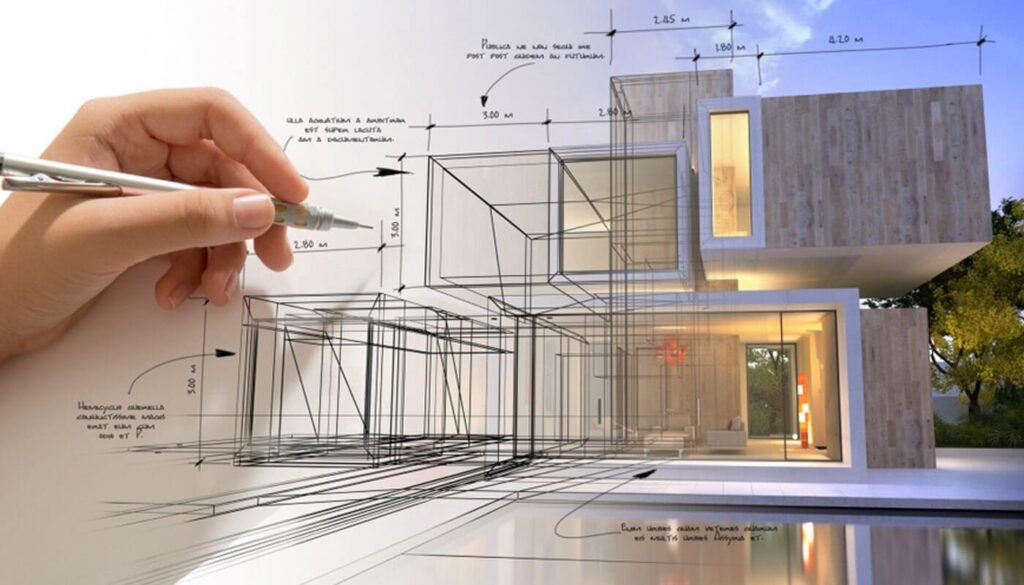A Detailed Introduction of Building Designs and Their Influence on Modern City Planning and Advancement
Architectural designs have long offered as a mirror to the societal worths and technological developments of their time, playing a crucial duty in forming modern city preparation and advancement. From the magnificence of Neoclassicism to the utilitarian strategy of Brutalism, each style has introduced distinct principles that influence city appearances and performance.
Historic Summary of Building Styles
Throughout background, building styles have actually evolved in action to cultural, technological, and ecological aspects. Each duration mirrors the prevailing worths, ideas, and developments of its time, leading to a rich tapestry of layout that symbolizes human creativity and adaptation. The old human beings, such as the Egyptians and Greeks, established fundamental styles that highlighted symmetry and proportion, serving both functional and visual purposes.
As societies transitioned with the Center Ages, Gothic style arised, characterized by its verticality and elaborate outlining, matching the spiritual aspirations of the era. The Renaissance marked a resurgence of timeless suitables, combining art and style in cutting-edge ways that influenced subsequent styles throughout Europe.
The Industrial Transformation presented brand-new products and building and construction techniques, triggering motions like Innovation, which tested conventional kinds and welcomed simpleness and capability. The 20th century saw a diversity of styles, with Postmodernism reacting against the stark minimalism of its predecessor, integrating historic recommendations and diverse aspects.
Today, building styles continue to progress, driven by globalization and sustainability issues, mirroring a vibrant interplay between heritage and technology. This historical introduction highlights the importance of design as a mirror of societal evolution and as a catalyst for city growth.
Trick Architectural Styles Explained
The variety of architectural styles shows the myriad influences that shape our built setting, each personifying unique attributes and cultural importances. Secret architectural designs consist of Classic, Gothic, Baroque, Modernism, and Postmodernism, each standing for special historical contexts and aesthetic viewpoints.
Timeless architecture, rooted in old Greece and Rome, highlights proportion, proportion, and the use of columns. In comparison, Gothic design, flourishing between Ages, is characterized by sharp arches, ribbed safes, and flying buttresses, creating an ethereal quality in sanctuaries. Baroque design, arising in the 17th century, is marked by majesty, fancy embellishment, and a dynamic interaction of light and shadow.

Comprehending these designs gives understanding right into the social stories and technological developments of their particular ages, highlighting just how style offers not simply as a sanctuary, however as a reflection of societal worths and desires.
Effect On Urban Preparation
In shaping the growth of cities, architectural designs considerably affect metropolitan preparation decisions. The option of building style commonly dictates the aesthetics, performance, and total character Website of city environments.
In addition, architectural designs can influence zoning policies and land make use of policies. Urban planners need to think about the dominating architectural patterns when making districts, making sure that brand-new developments balance with existing frameworks. This factor to consider click this link fosters cohesive city landscapes and boosts community identity.
The application of details architectural styles can additionally affect socioeconomic elements within a city. Premium modern layouts might bring in wealthy homeowners and businesses, leading to gentrification, while much more cost effective real estate options could focus on functional and lasting styles to fit diverse populations. Eventually, the interplay between architectural styles and city preparation develops vibrant cities that show both historical context and modern demands, shaping the lived experiences of their occupants.
Sustainability and Modern Design
Architectural styles play a crucial duty in resolving contemporary obstacles, specifically in the world of sustainability. As metropolitan areas expand and ecological worries increase, contemporary architecture significantly welcomes sustainable design concepts that focus on energy performance, source conservation, and marginal environmental impact.
Contemporary building motions, such as biophilic design and environment-friendly style, advocate for frameworks that balance with their surroundings, utilizing all-natural materials and advertising biodiversity - cda architects. These styles frequently incorporate renewable resource resources, such as photovoltaic panels and wind generators, to decrease dependence on nonrenewable fuel sources and lower carbon impacts
Moreover, the assimilation of sophisticated technologies, such as clever building systems, enhances power monitoring, optimizing source usage while ensuring passenger convenience. Ingenious water monitoring methods, including rainwater harvesting and greywater recycling, more add to lasting city atmospheres.
Significantly, sustainability expands beyond environmental issues; it incorporates social and economic dimensions. By promoting area well-being and promoting inclusivity, contemporary building designs straighten with sustainable advancement objectives. Consequently, the evolution of architectural methods proceeds to form resilient cities that not only satisfy the demands of today but likewise secure the future for generations ahead.
Area Engagement in Design
Area engagement in design serves as a crucial bridge between architects and the populations they serve, guaranteeing that the developed setting mirrors the demands and desires of its customers. This joint procedure welcomes neighborhood participants to contribute their understandings and preferences, fostering a sense of ownership and duty towards the areas they occupy.
Efficient community involvement utilizes numerous approaches, such as workshops, studies, and public discussion forums, to collect diverse perspectives (cda architects). These strategies promote a two-way dialogue, allowing architects to recognize regional contexts while equipping residents to articulate their worries and wishes. This inclusivity not only boosts the style quality but likewise promotes social equity by dealing with the unique obstacles dealt with by marginalized groups

Verdict
Building styles have actually profoundly influenced modern city preparation and advancement, reflecting evolving social and technological contexts. As cities continue to expand and adjust, the recurring discussion between building heritage and contemporary design concepts will remain essential in developing inclusive, vibrant spaces that enhance quality of life and promote social equity.